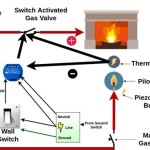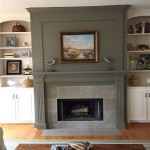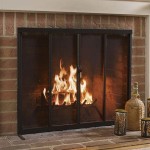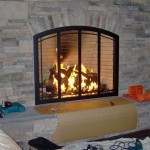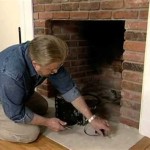Replacing a Gas Fireplace with a Wood Burning Stove
The allure of a crackling fire is undeniable. Whether it's for ambiance, warmth, or a sense of nostalgia, a fireplace can add a unique charm to any home. However, for homeowners with gas fireplaces seeking a more traditional and authentic experience, replacing them with wood-burning stoves presents a compelling alternative. This shift offers a multitude of benefits, from increased efficiency and cost savings to a deeper connection with the natural world.
Advantages of Wood-Burning Stoves
Replacing a gas fireplace with a wood-burning stove brings numerous advantages to the table, making it an appealing choice for many homeowners:
- Authenticity and Tradition: Wood-burning stoves offer a classic and nostalgic experience that resonates deeply with many. The crackling sounds and the mesmerizing dance of flames evoke a sense of comfort and connection to the natural world.
- Efficiency and Cost Savings: While wood-burning stoves require an initial investment, they can significantly reduce heating costs compared to gas fireplaces. The cost of wood, especially if sourced locally, can be significantly lower than the cost of natural gas. Additionally, wood-burning stoves are generally more efficient at converting fuel into heat, resulting in greater heat output.
- Environmental Impact: Wood is a renewable resource, and using it for heating can be considered a more sustainable option than relying on fossil fuels like natural gas. However, it is crucial to source wood responsibly from sustainable sources to minimize the environmental impact.
- Increased Heat Output: Wood-burning stoves are often capable of producing more heat than gas fireplaces, effectively warming a larger area. This can be particularly beneficial during colder months or in homes with larger living spaces.
Factors to Consider When Replacing a Gas Fireplace
Before embarking on replacing your gas fireplace with a wood-burning stove, several factors should be carefully considered:
- Existing Chimney and Firebox: A wood-burning stove requires a functional chimney and a firebox that meets the stove's requirements. Inspecting your existing chimney and firebox is crucial to ensure they are in suitable condition or if modifications are necessary.
- Local Regulations and Permits: Many jurisdictions have specific regulations regarding wood-burning stoves, including emissions standards and permitting requirements. It is essential to check with your local building department for any necessary permits or inspections.
- Maintenance and Safety: Wood-burning stoves require regular maintenance, including cleaning the chimney and the stove itself, to ensure optimal performance and safety. It is also crucial to understand and adhere to safety protocols when operating a wood-burning stove, such as ensuring proper ventilation and using a fire screen.
- Aesthetics and Space: Wood-burning stoves come in various styles and sizes. It is important to choose a stove that complements your existing décor and fits comfortably within your available space.
- Wood Sourcing and Storage: Consider the logistics of sourcing and storing wood. Access to local suppliers, wood storage space, and the effort involved in splitting and preparing wood for burning are factors to weigh.
The Installation Process
Installing a wood-burning stove involves several steps, each requiring expertise and careful execution:
- Chimney Inspection and Modification: A qualified chimney sweep should inspect your chimney and ensure it meets the requirements for a wood-burning stove. This may involve modifications to the chimney, such as lining or repairs.
- Stove Selection and Installation: With expert guidance, select a wood-burning stove that meets your needs and preferences. Once chosen, a qualified professional will install the stove, ensuring it is securely connected to the chimney and adheres to safety standards.
- Safety Features and Ventilation: The installer will ensure proper ventilation and the installation of safety features, such as fire screens and carbon monoxide detectors.
- Testing and Inspection: After installation, the stove will be tested to ensure its proper operation and compliance with local regulations. A final inspection by a qualified inspector may also be required.
Replacing a gas fireplace with a wood-burning stove is a decision that requires careful consideration. It is crucial to weigh the advantages and disadvantages, understand the regulations and safety requirements, and engage experienced professionals for installation. With proper planning and execution, this transition can bring a sense of warmth, authenticity, and efficiency to your home.

Replacing A Gas Fire With Wood Burner

Do You Want To Replace Your Gas Fire With A Woodburner

Converting A Fireplace To Wood Burning Stove Chesneys

Is It Time To Replace Your Old Gas Fire For A More Efficient Wood Burning Stove Alfred Poppins

Converting A Fireplace To Wood Burning Stove Chesneys

Replace Gas Fire With Woodburner In North Petherton Cosy Stoves

Do You Want To Replace Your Gas Fire With A Woodburner

Can I Swap A Gas Fire For Woodburner

Replacing A Wood Burning Stove With Gas

Want To Convert Gas Wood Fireplace Full Service Chimney

